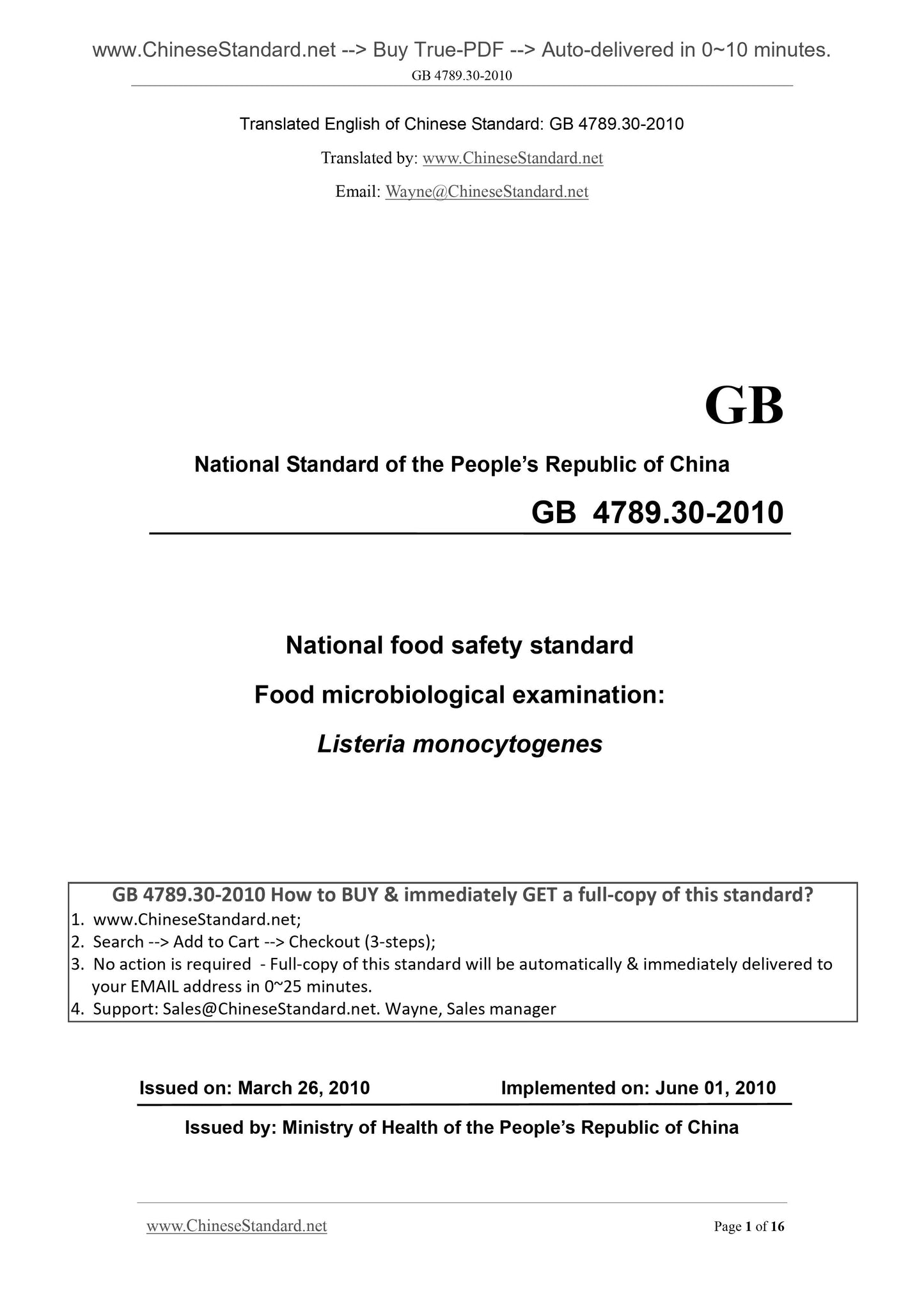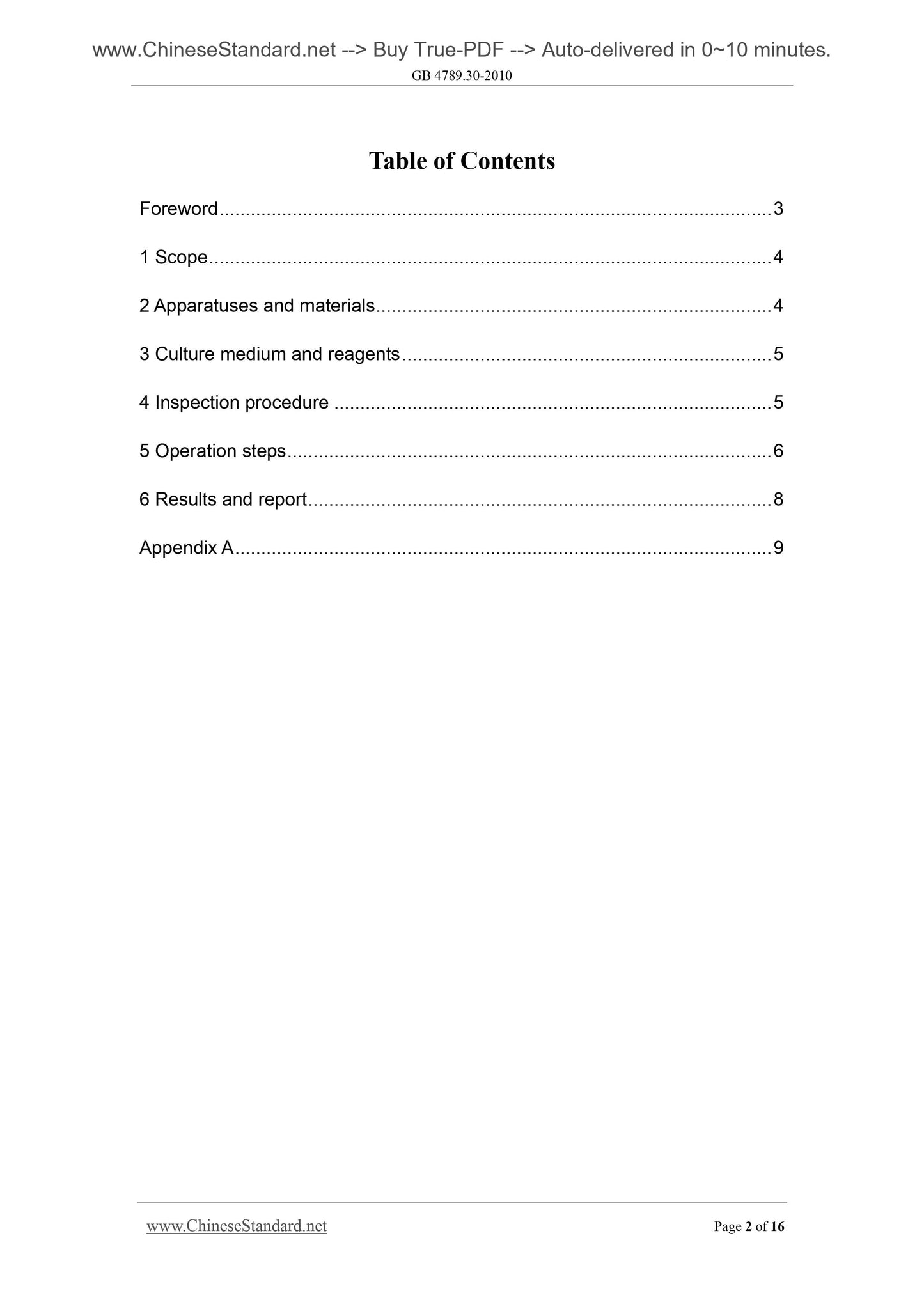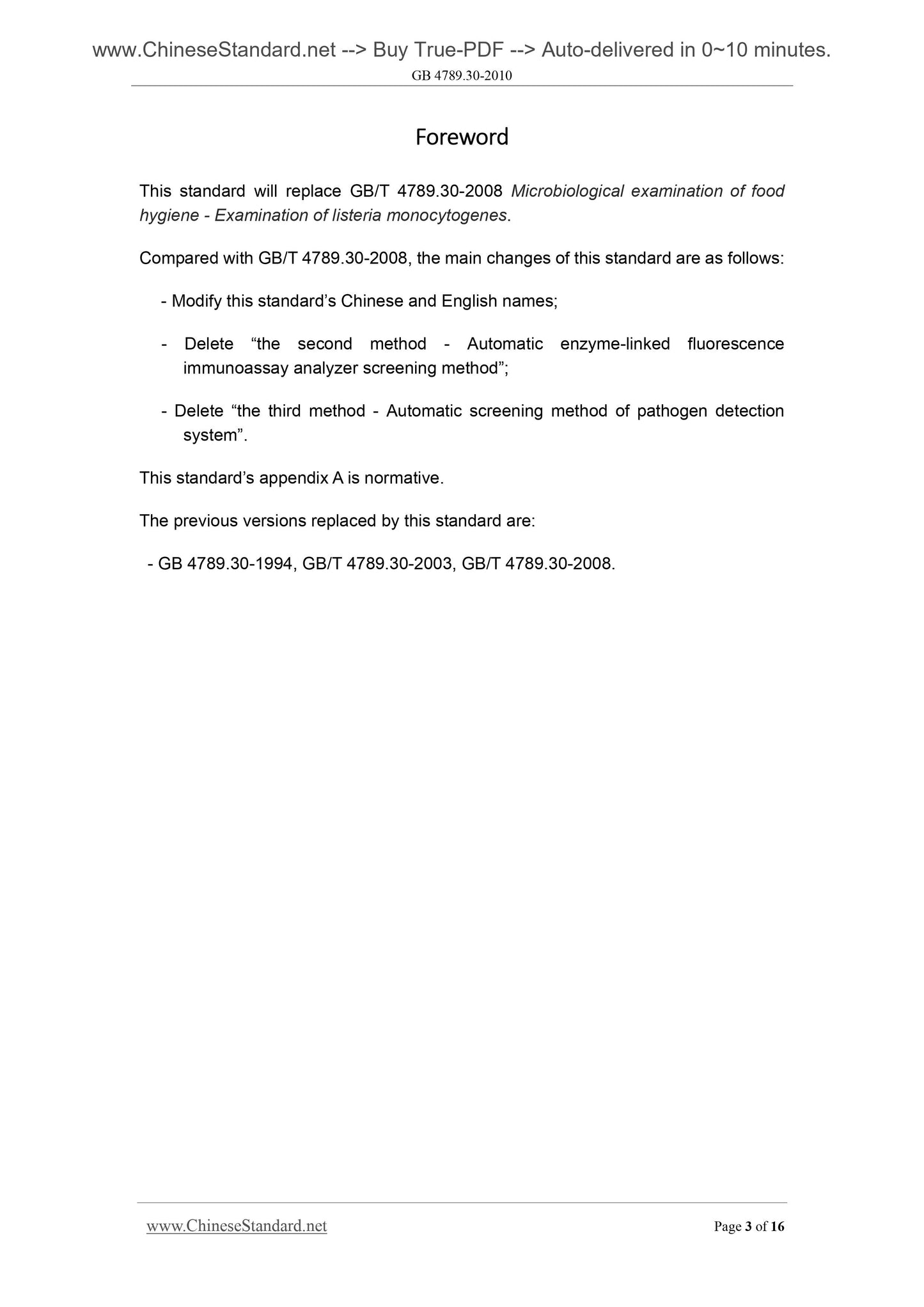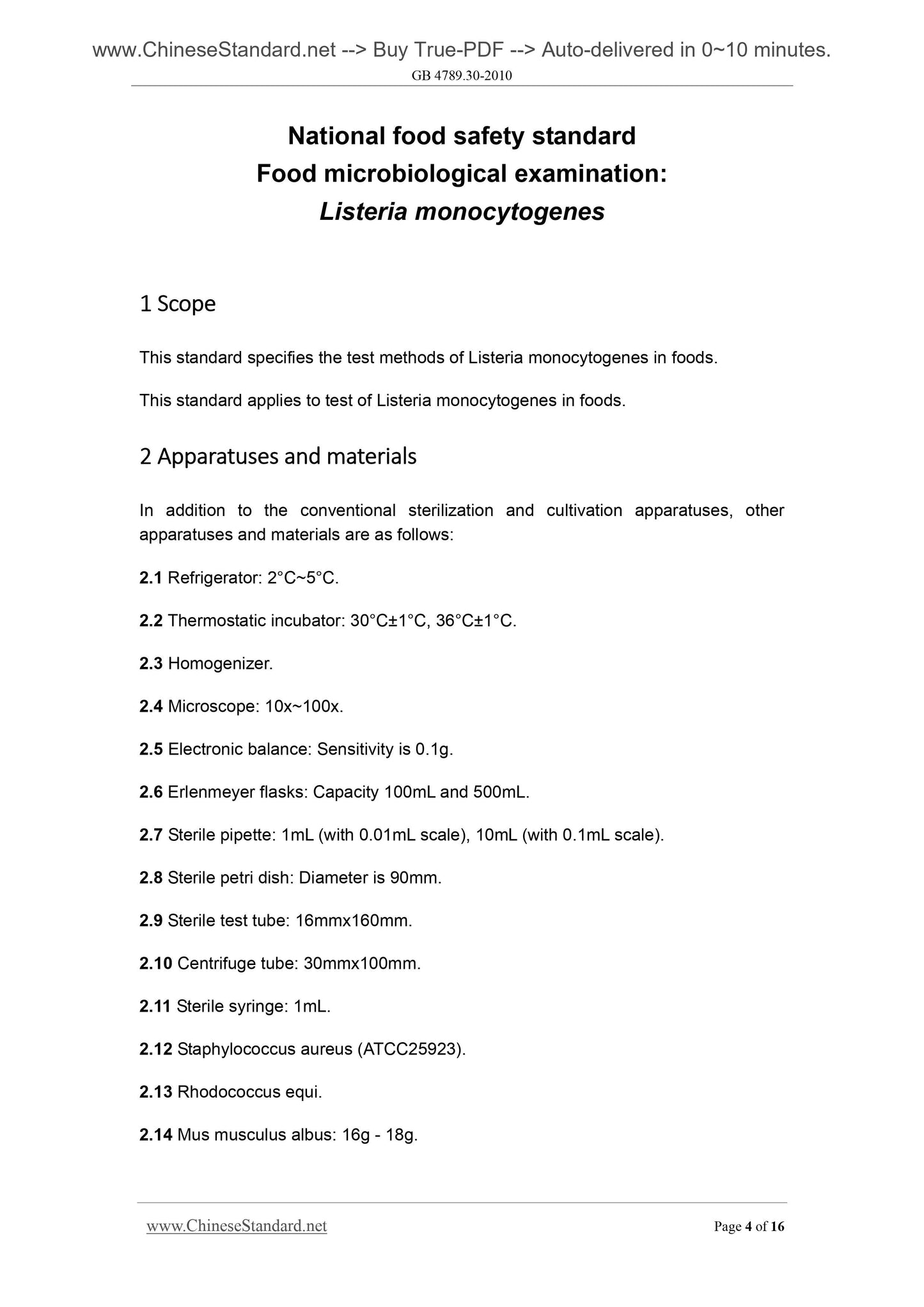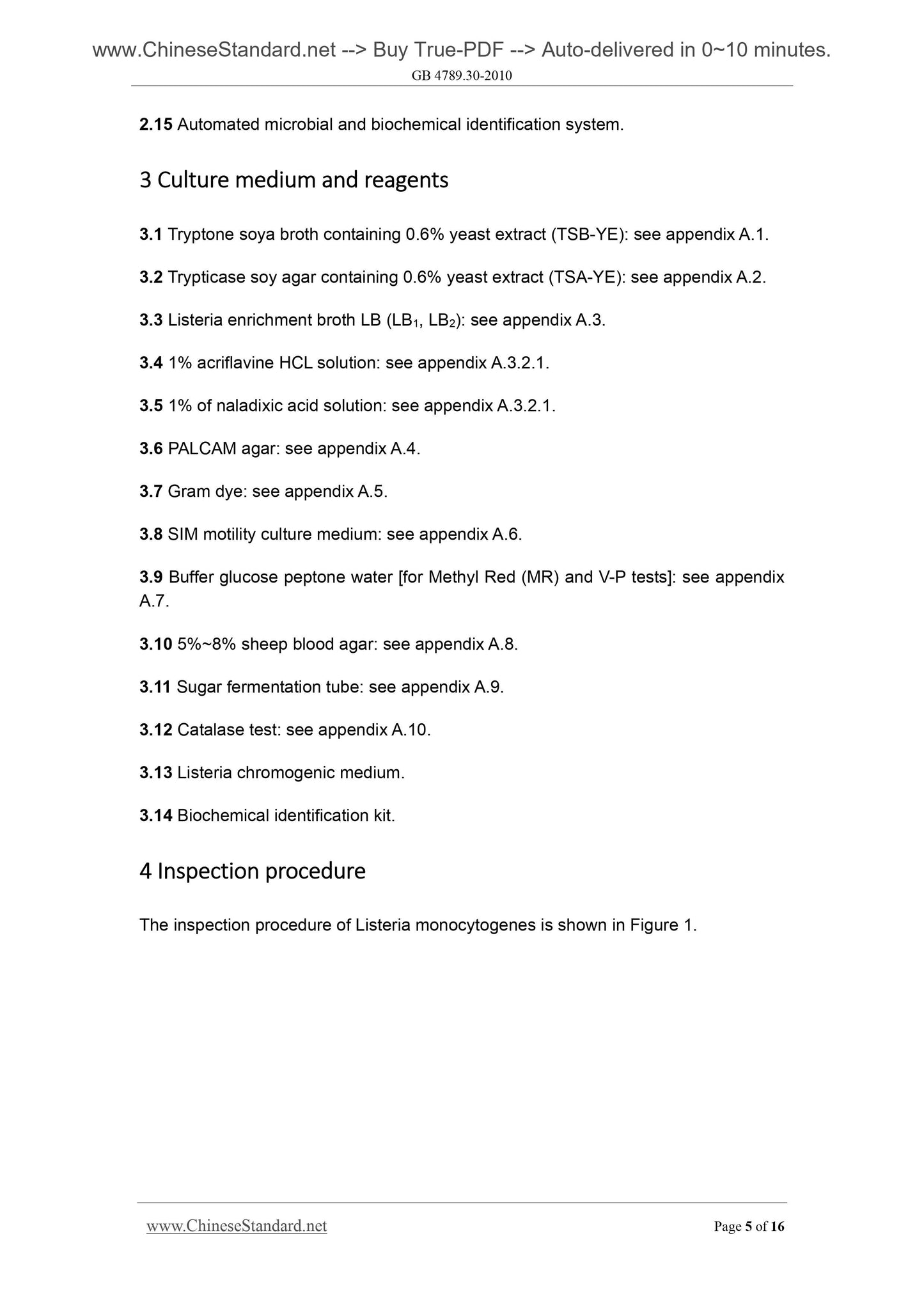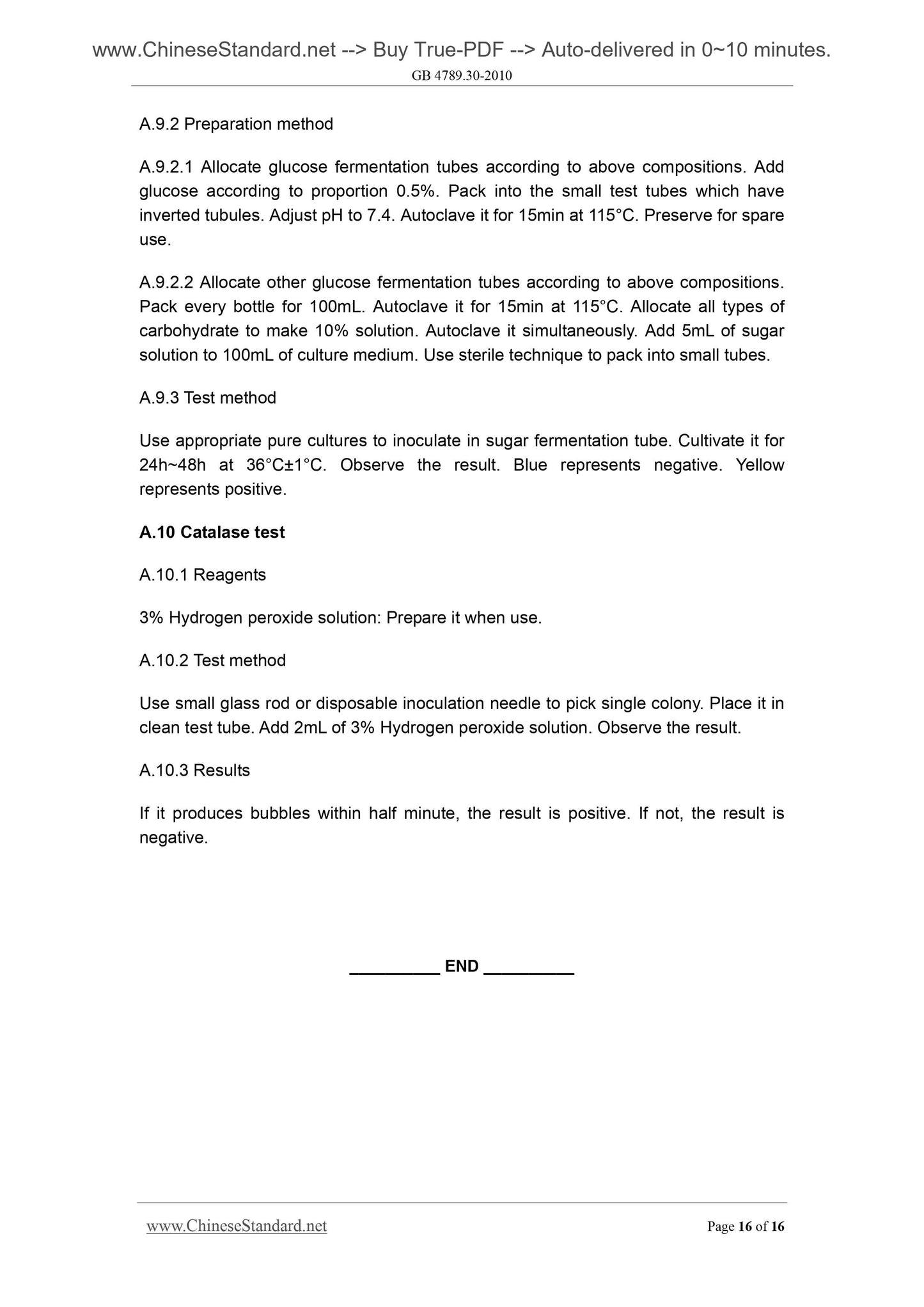1
/
of
6
PayPal, credit cards. Download editable-PDF & invoice in 1 second!
GB 4789.30-2010 English PDF
GB 4789.30-2010 English PDF
Regular price
$70.00
Regular price
Sale price
$70.00
Unit price
/
per
Shipping calculated at checkout.
Couldn't load pickup availability
GB 4789.30-2010: National food safety standard -- Food microbiological examination: Listeria monocytogenes
Delivery: 9 seconds. Download (and Email) true-PDF + Invoice.Get Quotation: Click GB 4789.30-2010 (Self-service in 1-minute)
Newer / historical versions: GB 4789.30-2010
Preview True-PDF
Scope
This standard specifies the test methods of Listeria monocytogenes in foods.This standard applies to test of Listeria monocytogenes in foods.
Basic Data
| Standard ID | GB 4789.30-2010 (GB4789.30-2010) |
| Description (Translated English) | National food safety standard -- Food microbiological examination: Listeria monocytogenes |
| Sector / Industry | National Standard |
| Classification of Chinese Standard | C53 |
| Classification of International Standard | 07.100.30 |
| Word Count Estimation | 10,184 |
| Date of Issue | 2010-03-26 |
| Date of Implementation | 2010-06-01 |
| Older Standard (superseded by this standard) | GB/T 4789.30-2008 |
| Regulation (derived from) | Circular of the Ministry of Health (2010)7 |
| Issuing agency(ies) | Ministry of Health of the People's Republic of China |
| Summary | This Chinese standard specifies the food Listeria monocytogenes bacteria (Listeria monocytogenes) test. This standard applies to foods Listeria monocytogenes bacteria test. |
Share
